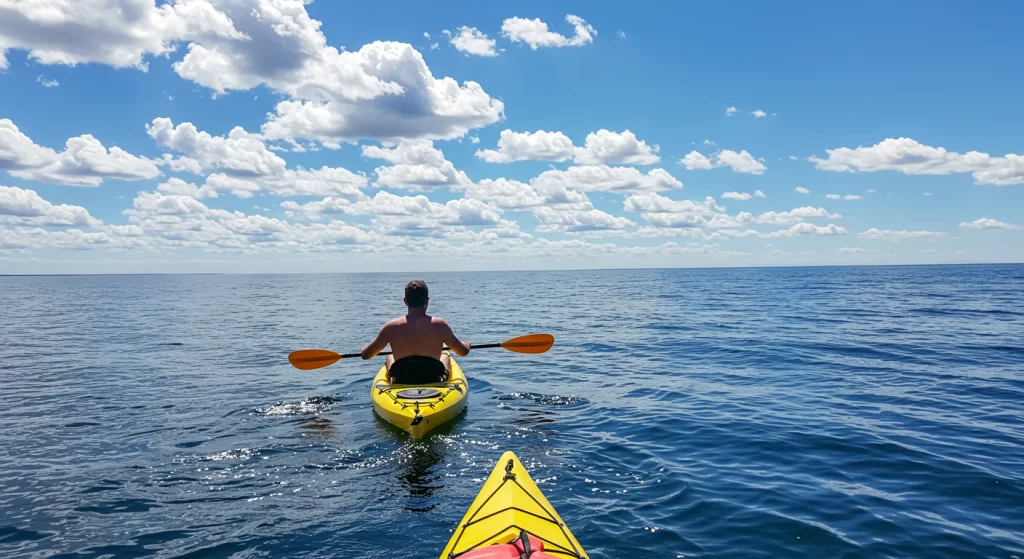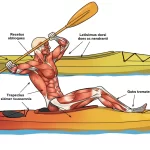Can You Kayak 30 Miles in a Day? Here’s What It Takes

Introduction: The Allure of Long-Distance Kayaking
Imagine gliding across a glassy lake at sunrise, the rhythm of your paddle slicing through the water as you chase the horizon. For many kayakers, pushing distance milestones like 30 miles in a day is the ultimate test of skill, endurance, and passion. But is it achievable?
The short answer is yes—experienced paddlers can kayak 30 miles in a day. However, success hinges on factors like fitness, preparation, gear, and conditions. In this guide, we’ll dive into what it truly takes to hit this milestone, blending expert insights, real-world examples, and actionable tips to help you prepare.
Factors That Determine How Far You Can Kayak in a Day
H3: 1. Fitness and Experience Level
Your physical conditioning and paddling expertise are the foundation of long-distance success. Seasoned kayakers with strong cores, shoulders, and cardiovascular endurance can sustain speeds of 4–5 mph for hours, while beginners might average just 2–3 mph.
- Training Matters: A study by the Michael J. Fox Foundation highlights how endurance athletes use interval training and strength exercises to build stamina.
- Technique Efficiency: Proper forward stroke mechanics reduce fatigue. Focus on torso rotation rather than arm strength alone.
2. Kayak Design and Gear
Not all kayaks are built for speed. Long, narrow touring or racing kayaks (like sea kayaks) glide efficiently, while shorter recreational kayaks create more drag.
| Kayak Type | Avg Speed | Best For |
|---|---|---|
| Recreational Kayak | 2–3 mph | Leisurely paddling |
| Touring Kayak | 4–5 mph | Long-distance expeditions |
| Racing Kayak | 5–7+ mph | Competitive speed |
Source: Kayak Cambria
3. Environmental Conditions
Favorable conditions can make or break your 30-mile goal:
- Flat Water vs. Currents: Calm lakes or rivers with gentle downstream currents (Minnesota DNR study) allow for steady progress.
- Wind and Waves: Headwinds over 10 mph can cut your speed in half.
- Temperature: Extreme heat or cold increases fatigue and risk of hypothermia/heatstroke.
4. Paddling Strategy and Breaks
Even elite paddlers take breaks. Aim for a 5–10 minute rest every 90 minutes to hydrate, stretch, and refuel. A Coastal Observer report notes that adventurers circumnavigating the U.S. coast averaged 20–30 miles daily by balancing paddling sessions with strategic stops.
Preparing to Kayak 30 Miles: A Step-by-Step Plan
H3: Build Your Endurance Base
- Start Small: Gradually increase weekly mileage. If you currently paddle 10 miles/day, add 5 miles weekly until you hit 25–30.
- Cross-Train: Cycling, swimming, and rowing boost cardiovascular health.
Optimize Your Gear
- Choose the Right Kayak: Touring or sea kayaks (14–18 feet) offer speed and storage. Check out USEA Kayak’s recommendations for expedition-ready models.
- Pack Light: Bring calorie-dense snacks, a hydration bladder, sunscreen, and a lightweight PFD.
Plan Your Route Wisely
- Use Currents: Plan downstream routes where possible. For example, paddlers on the Mississippi River often leverage its steady flow.
- Check Weather Apps: Windy.com or NOAA forecasts help you avoid surprises.
Real-World Examples: Who’s Done It and How?
Record Holders and Extreme Paddlers
- 24-Hour Record: The Guinness World Record for the distance kayaked in 24 hours is 350 km (217 miles) on a river, achieved by extreme athletes using racing kayaks and teamwork.
- Everyday Adventurers: On Reddit’s r/canoeing forum, seasoned paddlers report averaging 20–30 miles/day on multi-day trips.
Personal Stories: Lessons From the Water
In a West Coast Paddler thread, one kayaker shared how they completed a 32-mile coastal paddle by starting at dawn, riding tidal currents, and taking 10-minute breaks hourly.
Pro Tips for Sustaining Energy and Morale
- Eat Before You’re Hungry: Consume 200–300 calories/hour (energy bars, nuts, dried fruit).
- Stay Hydrated: Drink water hourly, even if you’re not thirsty.
- Mind Your Posture: Adjust footpegs and seat to avoid back strain.
- Use a GPS Watch: Track speed and distance to stay motivated.
Safety Considerations: Don’t Push Too Hard
While 30 miles is achievable, heed your body’s signals. Symptoms like dizziness, extreme fatigue, or numbness warrant an immediate stop. Always file a float plan with a friend and carry a waterproof VHF radio or PLB.
Conclusion: Is 30 Miles in a Day Right for You?
Kayaking 30 miles in a day is a badge of honor for dedicated paddlers—but it’s not for everyone. If you’ve built your fitness, optimized your gear, and respect the conditions, it’s an exhilarating challenge. Start with shorter distances, learn from each trip, and soon, 30 miles might just become your new personal best.
Call to Action: Ready to test your limits? Share your long-distance kayaking goals in the comments below, or explore our guide to expedition planning for more tips!

